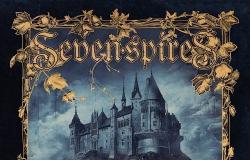
Even today, 32 years later, the beautiful mural created by the well-known Lorese artist Venturino Venturi colors Piazza Pertini in Castelnuovo dei Sabbioni. Indelible trace of the tragic history of the Nazi-fascist massacre of 1944 perpetrated in Castelnuovo dei Sabbioni, but also a new space for social aggregation and a place that unites past and present, where the mural acts as a silent mediator.
In 1984, the then Municipal Administration of Cavriglia commissioned the architectural firm De Filla – Merlini of Florence to develop an urban redevelopment project for an abandoned area of Camonti, Castelnuovo dei Sabbioni. The area was between the parish complex of San Donato and the middle school and sports facilities. The completed project was approved in July of the same year and included a large parking area useful for the nearby sports facility, a pedestrian path connecting to the Maestrino, accesses to the Church and, finally, most importantly, the creation of a symbolic and of scenic strength. From the project it was clear that that area of Castelnuovo dei Sabbioni would become a new urban space, capable of bringing together children, adults and teenagers.
However, the tragic parenthesis of 1944 that struck Castelnuovo has not been forgotten: the new space, in fact, was also supposed to be a place of memory of such events. Hence the idea of including qualified works of art and a vast mural on the wall, which summarized the perennial contrast between war and peace. The designers themselves decided to involve Venturino Venturi, an internationally renowned artist who at the time lived in Loro Ciuffenna. Thus on 20 July 1984, Piazza Sandro Pertiti and the monument to the fallen of the Second World War created by Maestro Venturi, “The Iron Man”, were inaugurated. It is a steel silhouette representing a standing man waving, which metaphorically refers to the family of the mural, or to the belief that after every war there is the hope of a new day, founded by a man and a woman who hold each other by hand. “The Iron Man” was made before the Castelnuovo Square was set up and in fact it was presented in an exhibition at Palazzo Strozzi in 1984 and was then positioned in the Valdarnese Square where it still stands today. In 1992, Giorgio Napolitano, former President of the Chamber, came to Cavriglia for the anniversary of the massacre and the inauguration of the mural.
Venturino Venturi then created the sketches for the large mural in July 1991 and finished the project in May 1992, aided by a team formed by Gionata Francesconi, Gilbert Le Bigre and Mario Francesconi. Lucia Fiaschi, Venturi’s niece and current director of the Venturino Venturi Museum in Loro Ciuffenna, declared in an interview given to the municipality of Cavriglia: “When Venturino presented the first sketch, which I still have in my archive today, it is exactly what you see now, the citizens’ committee was a little perplexed because they didn’t understand where their story was. But it was told to me by the then mayor of Cavriglia Enzo Brogi, but also the first supporter of the company and friend of Venturino, who convinced the citizens on that evening of presentation and still are today”.
At the center of the mural designed and created by Venturino Venturi is the synthesis of the war and the post-war period in a story that transcends Valdarno and encompasses the whole world.In the booklet “Venturino Venturi. The mural of Castelnuovo dei Sabbioni completed” from the municipality of Cavriglia we read:
“It is Venturino, an ageless man who here, in Piazza Pertini in Cavriglia, built a wall, to stem the tide of deaths from the nearby cemetery, where the chalice of blood not spilled in vain is kept. And the wall tells its story today“.
Venturi has, in fact, created a work that tells of the war, metaphorically represented by an enormous white, black and red mechanical monster and, then, its end. War is destruction, death, desolation, but this too has its conclusion, which for Venturino is summed up in a man, a woman and a child holding hands. The strength to reunite, get up and start life again was the salvation of humanity for the artist. But not only that, rising again thanks to work, represented in the mural by a yellow “betta” and representing all the miners of Castelnuovo, the driving force of the new post-war world. Ideally it is the reconstruction of the disaster left by the war made possible by the positive and energetic work of all citizens.
However, Venturino’s artistic vision did not stop there. For the artist it was also necessary to include a rebirth of the spirit in the mural. Continuing along the mural, in fact, we come across a white virgin on a celestial background which, for Venturino, also evoked a new and conscious involvement of the spirit in the post-war world. The story culminates with an ascension represented by a white space surrounded by a bright sky blue, a true projection of a world elsewhere.
Venturino’s entire vision of “war and peace” is arranged on a pictorial surface of 305 square meters in a wall made of cement panels 76 meters long, characterized by the large brushstrokes of the artist and his team. It is certainly one of the most significant works of the last period of Venturi, who passed away in 2002, and which testifies to the reading of the post-war reality of many contemporary artists. In fact, unlike the First World War where monuments to the fallen were erected, in the Second World War the interpretation of the events was so tragic and close to the population that many artists only after years were able to translate their vision into their works of art.
The mural was later restored in 2022 thanks to the 20 million that arrived at the municipality of Cavriglia regarding the call for cultural, social and economic regeneration of the villages at risk of abandonment allocated by the PNRR. On this occasion, citizens and the municipal council also celebrated the restoration with a dinner together, creating an important moment of community for the citizens.
The Mural by Venturino Venturi in Cavriglia is not only a work of art by the master, but also a gift that the artist himself wanted to give to his community. It is also, however, a bridge between past, present and future generations, towards a tragic event that must not be forgotten. In memory of the 85 victims of the Nazi-fascist massacre of 4 July 1944 and as a warning to fight the war in a world that, nowadays, seems to have forgotten about it.
For the period photos we thank the Mine Museum of the mines and the territory of Cavriglia. The photos were taken by photographer Emilio Polverini




